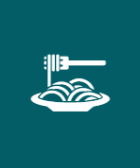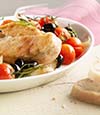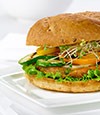.png/jcr:content/Group%202460%20(1).png 400w)
Portion Control
Getting the portion right
Once you settle on a meal plan and are choosing healthy foods to eat, there is one more step. It’s time to tackle portion size. Why? Because even if you're eating good things, you’ll want to make sure the amount of food you eat is in line with your plan.
For help figuring out the right serving sizes of the foods you love, use the tips—and these examples—to get you started. Remember, even if you’re using the healthy plate method, portion size still matters.
.png/jcr:content/NoPath%20-%20Copy%20(30).png 400w, /.imaging/webp/sanofi-platform/img-w500/dam/teamingupfordiabetes-com/NoPath---Copy-(30).png/jcr:content/NoPath%20-%20Copy%20(30).png 500w, /.imaging/webp/sanofi-platform/img-w600/dam/teamingupfordiabetes-com/NoPath---Copy-(30).png/jcr:content/NoPath%20-%20Copy%20(30).png 600w, /.imaging/webp/sanofi-platform/img-w700/dam/teamingupfordiabetes-com/NoPath---Copy-(30).png/jcr:content/NoPath%20-%20Copy%20(30).png 700w)
Measuring, not guessing
Try not to "eyeball" your portions. Different foods have different portion sizes, and you can't be consistent without measuring. But if no scale is around, use our ideas below so you have a sense of what you're eating.
What does a typical serving look like

Bread is 1 ounce or a single slice. Check the weight of bagels and rolls. If it weighs an ounce, great. If it weighs 2 ounces cut it in half, 3 ounces cut it in thirds, and so forth

Meat is 4 ounces or about the size of a deck of cards

Pasta is 1/3 of a cup or about the size of a medium ice cream scoop

Fruit is 1 cup or the size of a baseball

Cheese is 1 ounce or about the size of your thumb

Fish is 3 ounces or the size of a checkbook

Game Plan Action Item: 6 ways to not overdo it
- Spoil your dinner
If you’re hungry or if dinner is going to be late, have a small snack. Some healthy snack options are 1/4 cup of mixed nuts, which are low carb and have healthy fat, or 1 cup of baby carrots and 1 tablespoon of peanut butter or low-fat ranch dressing. Whatever you snack on, remember to count the carbs. - Serve vegetables at the table
Make filling up on veggies the easy choice. Serve the vegetables family style at the table so you can help yourself to seconds. Serve the starch and meat restaurant style in the kitchen, and put leftovers away before sitting down to eat. - Measure enticing foods
Fill small plastic bags with single servings of crackers, chips, cookies, trail mix, or other tempting treats to make eating the right amount effortless. You can store the bags in the original food containers to save pantry space. Whenever you have leftover cake, wrap each small slice in wax paper. Put it all in a storage container and pop it into the freezer. When you need (or want) cake, take out one piece. - "Health food" isn’t always healthy
Be aware. Some experts believe that we eat more when we are told a food is healthy. In a Cornell University study, people watching a video ate 84 more calories of granola when it was labeled low fat than when the exact same granola was labeled regular. Don’t let phrases like low fat, diabetes friendly, or organic trick you into eating more than you should. - Rethink "wasting" food
If you eat more food than your body needs, it’s still being wasted since it will be stored as fat. If there is extra food, throw it away. Or better yet, just pop it in the freezer for another day. - Make it last
Try to slow down and enjoy every bite. Sip water or put your fork down between bites; eat ice cream with a baby spoon; use chopsticks at dinner— particularly if you aren't very handy with them; engage in a one-person contest to be the slowest eater at the table. All these tips may help you feel full at the end of the meal.
Recommended


What's For Dinner?
Easy chicken and tomatoes with olives and rosemary.

Why Blood Sugar Goes Up And Down
Making sense of blood sugar highs and lows.

"When restaurants super-size my meal, I get a to-go bag and take half home"
— Julie U., TeamingUp Champion

Eating Your Way
Explore meal planning options to keep you on track.

